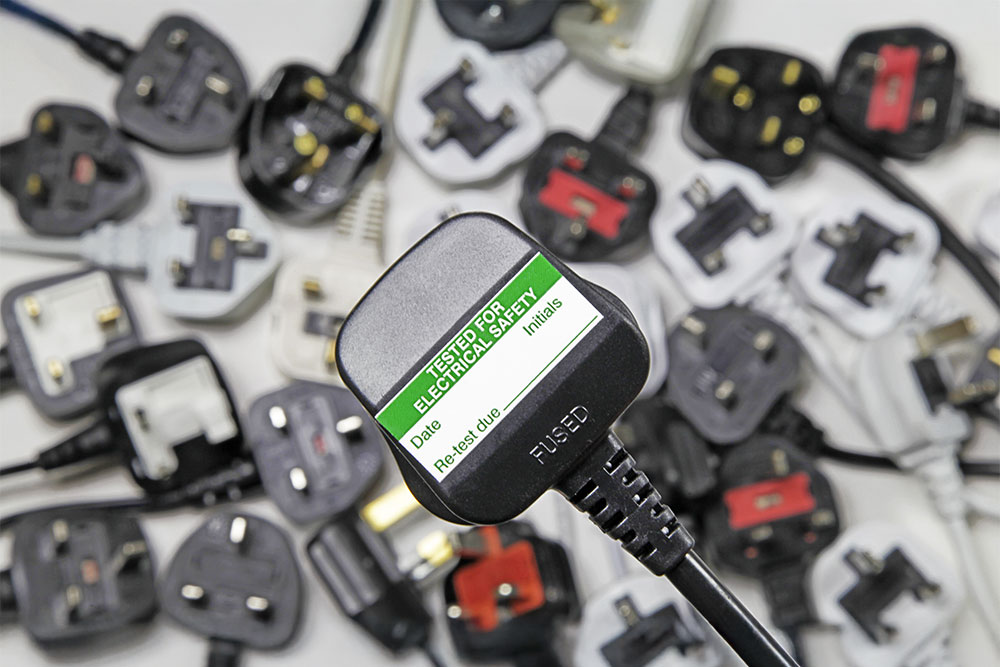
Asbestos-related disease deaths in Great Britain exceeded 5,000 in 2022.
The Health and Safety Executive (HSE) published this figure in its annual report: Asbestos-related disease statistics, Great Britain 2024.
With asbestos-related deaths still numbering in the thousands each year, asbestos exposure continues to be the biggest workplace killer. But, decades after the asbestos ban, it seems that fatalities may finally have peaked.
We’ve reviewed the HSE’s report and highlighted how asbestos-related disease diagnoses and fatalities are changing.
Summary
The HSE report provides an overall picture of asbestos-related diseases and deaths in Great Britain in 2022.
The key figures are:
- There were over 5,000 asbestos-related disease deaths
- There were 2,257 deaths caused by mesothelioma
- There were 493 deaths caused by asbestosis
- There were an estimated 2,500 caused by asbestos-related lung cancer
- There were an estimated 27 deaths caused by other asbestos-related cancers

There is a well-documented link between asbestos exposure and several forms of cancer, notably lung cancer. However, because asbestos-related cancers have no unique symptoms, it’s difficult to conclusively say whether they were caused by asbestos exposure or not. This uncertainty is why the cancer deaths are listed as estimates in the report.
You can find the full HSE report on UKATA’s website here.
Introduction
Asbestos is resistant to heat, flames and chemicals. It works as an electrical insulator and as soundproofing. It’s flexible, durable and naturally occurring. Because of its long list of qualities, asbestos was used widely in construction and manufacturing from the late 1800s until 1999.
As early as 1899, doctors knew that asbestos exposure was dangerous, yet its use continued to grow. Its popularity peaked in the 1960s, around the same time asbestos-related diseases were first diagnosed in people who had not directly worked with the material.
Despite this worrying development, the government response was slow. The most dangerous types of asbestos were banned only in 1985, while ‘safer’ asbestos products were allowed for another 14 years. After a century of commercial use and thousands of deaths, asbestos was finally banned outright in 1999.
Asbestos-related diseases have a long latency period. It can be years, often decades, between exposure and disease onset, which is why asbestos-related deaths still number in the thousands despite the ban.
In most cases, the people dying now from asbestos-related diseases worked with the material before 1999, often in industries where exposure risks were highest. This is reflected in the HSE statistics, which show that most deaths occur in people aged 65 and over.
Asbestos Awareness Course
Our Asbestos Awareness course provides a thorough understanding of asbestos, its likely locations and associated dangers. It supports compliance with asbestos legislation and teaches participants how to stay safe around asbestos and what to do if they’re accidentally exposed.
Asbestos-Related Cancers
When asbestos is disturbed or damaged, microscopic fibres are released into the surrounding area. If inhaled, these fibres become lodged in the lung tissue. Over time, this can cause scarring, inflammation and the growth of cancerous cells.
Mesothelioma
Mesothelioma is a form of cancer that affects the lining of the lungs (the pleura). It is almost exclusively caused by asbestos. In fact, the relationship between asbestos and mesothelioma is so strong that cases provide an overall view of past exposure.
Mesothelioma deaths increased over the past 50 years as those exposed to asbestos at work between the 1950s and 1980s began to develop the cancer. This long latency is typical of mesothelioma. Sadly, so is a low survival rate and rapid deterioration after symptoms first show.
In 2022, there were 2,257 mesothelioma deaths. The majority (1,838) were male since industries where asbestos exposure was likely, such as construction, were typically male-dominated.
Overall, deaths have dropped slightly from 2021, when 2,290 were recorded. The drop is mainly attributed to a decline in male deaths.
Researchers theorised male deaths would peak and then fall in the 2020s based on historical differences in where men and women worked. As mentioned, industries where exposure risks were highest were traditionally male-dominated.
It wasn’t until the 1970s that women joined these high-risk industries in significant numbers. As such, female deaths have remained relatively consistent and are expected to stay this way for several more years.
Lung Cancer
Asbestos is a leading cause of lung cancer, second only to smoking. However, lung cancer symptoms are identical, whatever the cause, so it’s difficult to say for sure how many cases are the result of asbestos exposure.
To get around this issue, the HSE uses epidemiological information to calculate asbestos-related lung cancer deaths. It’s assumed that the ratio between asbestos-related lung cancer and mesothelioma is around one-to-one. So, while not certain, the HSE estimates there are 2,500 asbestos-related lung cancer deaths annually.
Despite the current link, it’s predicted that lung cancer cases will drop faster than mesothelioma cases in the future. Mesothelioma is exclusively linked to asbestos exposure, whereas lung cancer has several risk factors. These risk factors stack, so smokers who have also been exposed to asbestos are most likely to develop lung cancer. As smoking and asbestos exposure have both declined in recent years, it’s theorised that asbestos-related lung cancer cases will, too.
Other Cancers
Asbestos is not only linked to lung cancer. It’s been known for years that asbestos exposure can also cause cancer of the larynx and stomach. Now, it’s also believed that it can cause cancer of the ovary and pharynx based on recent research from the International Agency for Research on Cancer.
Similar to lung cancer, it’s impossible to say with certainty that asbestos is the cause of these other forms of the disease. But HSE estimates suggest:
- There were 3 deaths caused by asbestos-related cancer of the larynx
- There were 24 deaths caused by asbestos-related cancer of the stomach
Other Asbestos-Related Diseases
Asbestos exposure causes several other debilitating conditions, which can prove fatal.
Asbestosis
Asbestosis is a chronic lung disease triggered by the inhalation of asbestos fibres, often over extended periods. It’s similar to pneumonia, causing severe shortness of breath and chest pain.
While asbestosis alone is not always fatal, sufferers face an increased risk of developing lung cancer or mesothelioma. Because of the common comorbidity, the HSE doesn’t record asbestosis fatalities if mesothelioma was also recorded on the death certificate.
In 2022, there were 493 deaths where asbestosis was recorded on the death certificate. It was described as the underlying cause in around 40% of those cases.
The majority of asbestosis deaths are recorded in those aged 75 and over. This is to be expected as asbestosis is linked to heavy asbestos exposure. Older people would have worked with asbestos for longer before its ban.
Pleural Disease
Pleural disease is a non-cancerous condition affecting the lining of the lungs. There are two forms: pleural thickening and pleural plaques, which are considered less severe.
There were 357 new cases of pleural thickening in 2022.
Pleural plaques are harder to diagnose as they’re often symptomless. Most diagnoses happen incidentally when patients undergo chest X-rays for unrelated conditions.
Have Asbestos-Related Deaths Peaked?
The data seems to suggest that asbestos-related diseases are levelling off. This trend was predicted as more time passed from the 1999 ban.
However, more than 5,000 people died in 2022 as a result of asbestos exposure, and it will be some time before this number drops significantly.
And asbestos is still a concern. Although the vast majority of fatalities are linked to past exposure, an estimated 1.5 million buildings in the UK still contain asbestos. Tragically, there will be new cases of asbestos-related diseases for years to come.
Our online Asbestos Training courses help reduce the risk of exposure. We offer awareness-level courses which explain how to identify and avoid asbestos in the workplace. We also provide advanced asbestos management courses for duty holders who are required to comply with the Control of Asbestos Regulations 2012. Whatever your requirements, our courses will prepare you to work safely around the material, reduce the risk of exposure and protect yourself and others from the threat of asbestos.






















